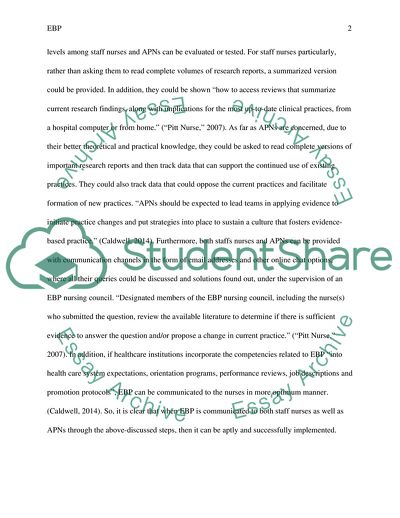Not Found (#404) - StudentShare. https://studentshare.org/nursing/1839693-what-nurses-need-to-know-and-do-to-offer-evidence-based-care
Not Found (#404) - StudentShare. https://studentshare.org/nursing/1839693-what-nurses-need-to-know-and-do-to-offer-evidence-based-care.


